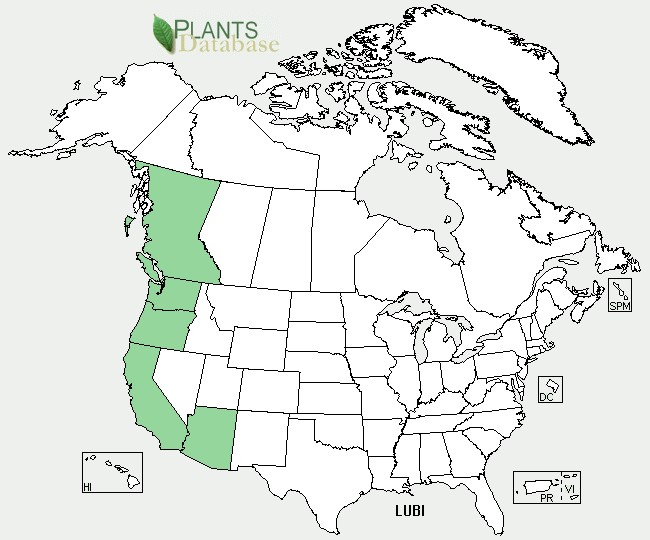Habitat
The Lupinus bicolor is often found along the west coastal regions,
from California to Washington (Canals
et
al. 2005). It is
often found in nutrient poor soil with around 7-79 inches of
rainfall per year, and has a tendency for high root
development in compact soils (Helena de Silva & Rosolem 2003).
L. bicolor is an annual plant, meaning that it a plant
that completes a life cycle within one year or within a growing
season. The plant begins to bloom in March and
continues through June.

There are many different factors that contribute to the specific habitat of the plant, but in specific, it grows best in temperatures from 0.6°C-28°C and benefits from large amounts of light (Calflora 2013). Since the Lupinus is generally found in a grassland, it often grows in fields with practically no shade. The chemical balance of the pH of the soil is generally neutral but ranges from 5-8.5 (Calflora 2013).
The L. bicolor grows best at certain elevations, 1000-2000 meters. This characteristic separates it from other members of the genus Lupinus. Figure 1 depicts the relationship between two close relatives to L. bicolor. L. nanus and L. pachylobus are both close relatives however L. pachylobus can only be found growing up to 1000 meters, whereas the L. bicolor and L. nanus have evolved to survive at elevations up to 2000 meters (Drummond 2008).
Figure 1. The tree illustrates the evolutionary relationship between three members of the genus Lupine. These three plants are found growing at different elevations.
Image 11. Photo of a vast field fillded with Lupinus bicolor used with permission from and taken by Mark Skinner.
Go back to Classification or move forward to Form and Function.

